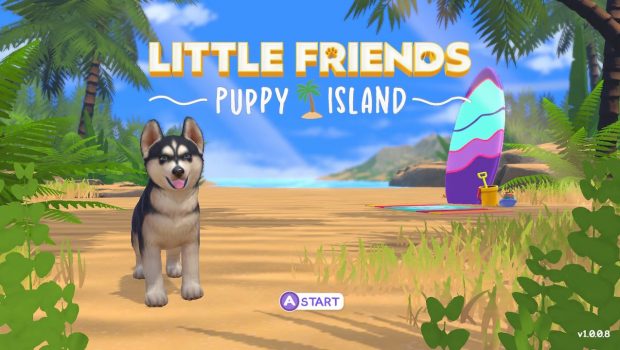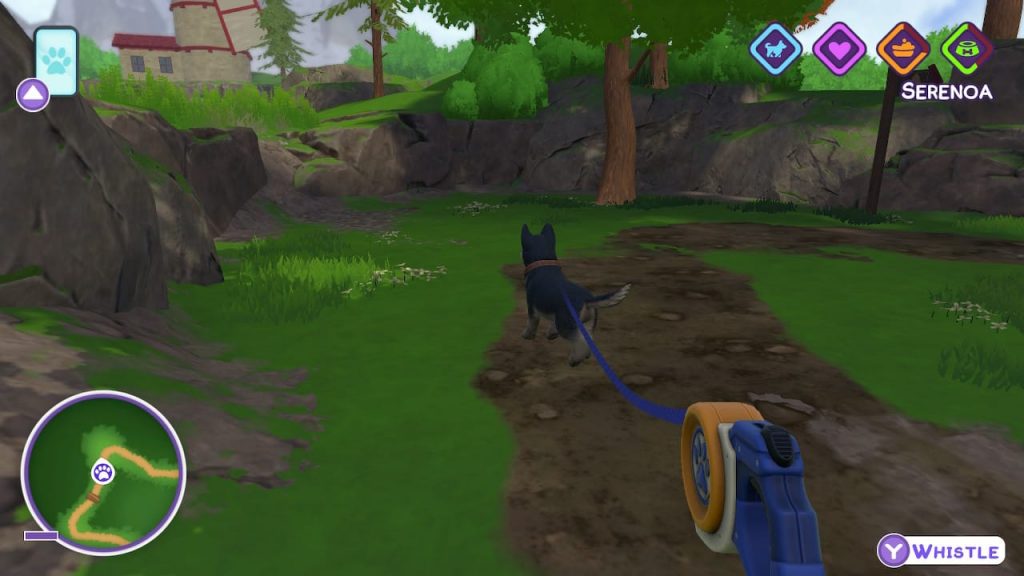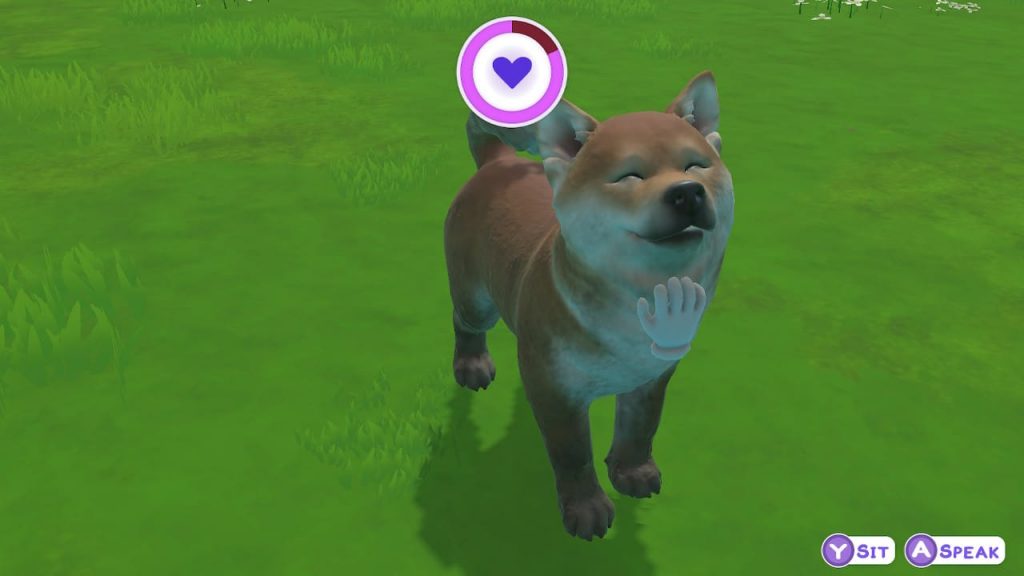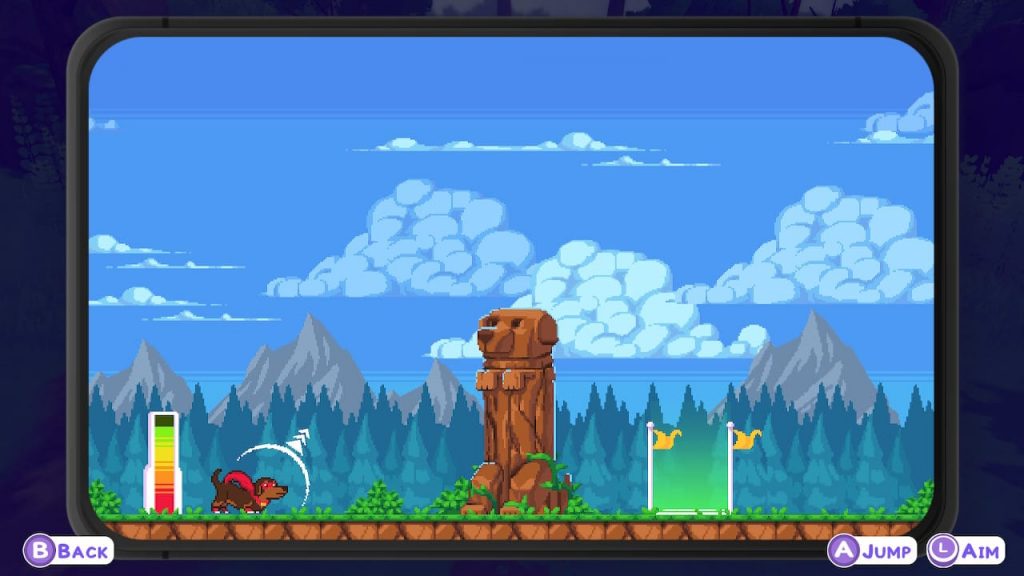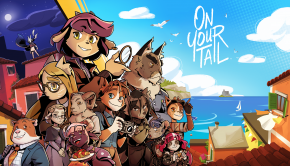Little Friends Puppy Island Switch Review
Summary: Little Friends: Puppy Island certainly has lots of adorable dogs to care for, but sadly spends way too much of its playtime having the player repetitively walk them through boring and visually unappealing areas.
2.4
Repetitive
The way I see it, after taking a look at footage of Little Friends: Puppy Island – a game about walking and taking care of dogs – there are three main categories of people it could appeal to. People that like dogs but don’t necessarily want one as a pet for various potential reasons. People that do want a dog but can’t have one (yet) and could use the game as a sort of replacement. And lastly, people that really like dogs, to the point where they have one or multiple and still wouldn’t mind playing a game that only simulates the experience. I myself fall into the first camp, and so I was interested in Little Friends: Puppy Island for that reason. Which of these three types of possible customers can the game satisfy? One? None? All three? Somehow people that don’t even like dogs? Let’s find out.
Little Friends: Puppy Island sees you exploring the titular island alongside your trusty puppies through a first person view, walking them and taking care of them while slowly but surely turning the island into the perfect paradise for your little friends. The main gameplay loop goes as follows: you enter a new area, get an idea from someone for a new facility, find the right place within the area to put up said facility, assign pups to build it (seemingly completely on their own, mind you), and then scour the area for helpful materials to finish the job. Naturally, you’re going to need the support of your dogs in this entire process, and you’ll find plenty of them during your travels – with most well-known breeds here and accounted for. Canines have five stats (agility, endurance, friendliness, obedience and speed) that can be leveled up through training them in various ways – and in order for them to build facilities or deal with certain obstacles that block paths, they need to be appropriately leveled in one or more of those five stats.
Training your dogs mostly involves walking, petting and playing fetch with them. In addition, you also need to feed them when they run out of energy and clean them when they get dirty – if a dog has no energy, you cannot walk them. Lastly, you can dress up your quadruped buddies with clothes, glasses, hats and shoes. These garments serve no function other than to make your dogs look fashionable, but are definitely a fun feature for those who like customization options. The clothing choices alongside all the different breeds provide some nice visual variety – unfortunately, having variety is not something that can be said about the gameplay. Frolicing with your pups is the best thing about Little Friends: Puppy Island, and yet the game barely requires you to do that to make progress. No, it instead makes you walk them from place to place through both aesthetically and mechanically uninteresting areas that are largely devoid of any cool landmarks, which then only sometimes gets broken up by doing a simple quick time event or one of five short and boring minigames to handle an obstacle. It’s not just the walking part of the game that becomes monotonous though – even taking care of the dogs regrettably also devolves into repetition.
Don’t get me wrong, the titular puppies are adorable as heck – and fairly well animated to boot – but I can only watch them do the same exact actions over and over again for so long before the novelty wears off. Nearly everything the game forces you to do feels like a chore – walking is a chore, feeding is a chore, cleaning is a chore, leveling up stats is a chore, and the minigames are a chore. I can only imagine that dog owners like or at least tolerate doing these things (leveling up stats and minigames aside) because their pet is, you know, a living being with a soul – the pups in Puppy Island sadly don’t display much personality. Having so many of them – around thirty by the end of the game – while only being able to walk (and thus train) one of them at a time doesn’t help either. You can have three dogs on screen together while at home – but any time spent there basically doesn’t progress the story at all, and the dogs don’t even really interact with each other.
Speaking of the story, your dogs are not just building facilities for themselves, but also for the purpose of attracting visitors to the island. The game tells us that we are being successful in that regard – so do we ever actually see other humans or their dogs walking around? Nope. There is one moment in the story that sees you rescue someone else’s pup, but besides that, the supposed effect we’re having on “Puppy Island” is merely told and not shown. If the island was only opened up to guests after the game ended, this would not be as awkward. Similarly disappointing is the lack of meaningful explanations regarding all the mysteries surrounding the island that the game builds up. Why are there all these dog statues here? Why is this island inhabited by all these wild puppies? As far as I could glean, the answer is: just because. Now I’m certainly not expecting deep lore from a game about walking dogs – it’s only because the game brings attention to these questions that I even thought about them in the first place, and that’s why it feels more anticlimactic to receive unsatisfactory answers.
On a technical level, Little Friends: Puppy Island doesn’t fare much better either. There were multiple times where after completing a minigame, part of the game’s UI would disappear or my character would entirely stop responding to button inputs, forcing me to restart. This character also keeps describing the beauty of the world around them, while I’m having to look at the mostly ugly and flat textures of the actual game. The one genuine bright spot here is the audio – it’s not half bad. While the compositions themselves aren’t anything spectacular, they fit the vibe of each area well and are also quite dynamic. The minigames have “8-bit” versions of the area themes to match the aesthetic, the loading screen has a more subdued version of the home theme, and the music appropriately slows down when carefully approaching a wild pup. The sounds the pups make – from barking to panting – are also on point, as are the game’s other sound effects.
Final Thoughts
Out of the ten hours I spent playing Little Friends: Puppy Island, I think I must have spent at least seven of them just mindlessly trudging from one place to another. It feels like the game replicates a lot of the worst parts of owning a dog without capturing too much of what makes it fun, besides how darn cute the little guys are. I could look past some of its faults if it wasn’t sold at nearly full price, but there is honestly not a single person on this planet that should pay that much for such a shallow and repetitive experience. If the price got cut in half, I might cautiously recommend it to kids that really love dogs and don’t have one – that’s honestly the only demographic of people I could see finding some enjoyment out of Little Friends: Puppy Island. To anyone else, I recommend going outside if you desire a good walking simulator.


